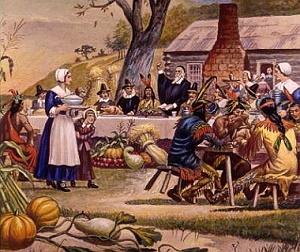 Dear readers, Catholic Online was de-platformed by Shopify for our pro-life beliefs. They shut down our Catholic Online, Catholic Online School, Prayer Candles, and Catholic Online Learning Resources—essential faith tools serving over 1.4 million students and millions of families worldwide. Our founders, now in their 70's, just gave their entire life savings to protect this mission. But fewer than 2% of readers donate. If everyone gave just $5, the cost of a coffee, we could rebuild stronger and keep Catholic education free for all. Stand with us in faith. Thank you. Help Now >
Dear readers, Catholic Online was de-platformed by Shopify for our pro-life beliefs. They shut down our Catholic Online, Catholic Online School, Prayer Candles, and Catholic Online Learning Resources—essential faith tools serving over 1.4 million students and millions of families worldwide. Our founders, now in their 70's, just gave their entire life savings to protect this mission. But fewer than 2% of readers donate. If everyone gave just $5, the cost of a coffee, we could rebuild stronger and keep Catholic education free for all. Stand with us in faith. Thank you. Help Now >
Spring comes early to California, but drought is likely to continue and will impact food prices where you live
FREE Catholic Classes
If you live in California, you may have noticed a bit more rain has fallen versus last year. While the state remains mired in drought, and that drought is expected to persist, a weak El Nino has developed and may be contributing to some of the added rainfall. It's better news for the state where water shortages have become so acute that community wells have gone dry.
Highlights
Catholic Online (https://www.catholic.org)
3/5/2015 (9 years ago)
Published in Green
Keywords: California, drought, rainfall, storms, RRR, ridiculously resilient ridge, el nino
LOS ANGELES, CA (Catholic Online) - California has enjoyed a little more rain this year than it has last year, but drought conditions remain. Rain did not fall across much of the state in January 2014, but a little did in this year. A recent string of storms has also dropped rain and even hail across much of California.
It is unclear why the added rain has come but some scientists suspect a weak El Nino in the Pacific is responsible.
Spring is the Sacramental Season of the Church! Be the one who gives the perfect gift for your loved one's First Holy Communion.
An El Nino is declared when surface temperatures in the equatorial Pacific rise significantly above average. Those warmer temperatures result in more evaporation forming more clouds, more storms, and this leads to increased rainfall for California and much of the Southwestern states. It can even impact weather as far away as New England.
In 2014, a powerful El Nino was anticipated when early results showed a massive upwelling of warm water in the Pacific. However, the El Nino did not develop, disappointing many in California who were hoping the phenomenon would break the state's drought.
Now a new El Nino appears to be forming. Japan declared a weak El Nino had formed in December 2014.
Despite the weak El Nino, California would need several years of above-average rainfall to replenish its water supplies. Although there has been more rainfall in 2015 than in 2014, the amount is still well below normal.
The drought, now into its fourth year, has significant impacts on the population and across the nation. California is a major agricultural center, especially fruits and nuts. Many of the fields in California's San Joaquin Valley are fallow since farmers were unsure if there would be enough water to supply their crops. Indeed, the Obama administration has cut federal water allotments to central valley farmers to zero this year.
But Obama cannot make it rain. Without water, millions of farm workers are unemployed and relocating to other regions of the country. Food prices have increased as produce becomes scarce.
Many communities, generally poor ones served by shallow wells, have run out of water as the water table is sucked below the depth of their pipes. Wealthier communities are consuming water stored deep underground for centuries, drawing on a dwindling reserve supply. The lack of water has resulted in a spate of laws regulating water usage. In some places, it is illegal to water the lawn. Many residents have responded with alternative lawn arrangements such as drought-resistant plants, gravel, and even Astroturf.
Mountain communities have also been impacted by the lack of snow. Ski resorts remain closed or are open for shorter stretches because the snow just isn't there. California relies on summer snow melt to refill reservoirs. These same reservoirs also attract vacationers and sportsmen, but not so many this year.
The primary reason why California is suffering so much appears to be a dominant ridge of high pressure off the west coast and known as the "Ridiculously Resilient Ridge" (RRR). This ridge of high pressure has formed every year since 2013 and has deflected storms from California.
This year however, things have changed a little. The ridge has shifted east a little which is allowing some rainfall to make its way into California, provided it comes in with a powerful storm system.
Spring has sprung in California and the trees are full of blossoms. Many Californians are happy with the early warmth and have taken to the outdoors in the unusually warm weather. However, few are looking forward to the hot, dry summer that this early warmth portends and hope remains high that weather patterns will continue to develop in a way that brings water, jobs and relief back to parched California.
---
'Help Give every Student and Teacher FREE resources for a world-class Moral Catholic Education'
Copyright 2021 - Distributed by Catholic Online
Join the Movement
When you sign up below, you don't just join an email list - you're joining an entire movement for Free world class Catholic education.
-

-
Mysteries of the Rosary
-
St. Faustina Kowalska
-
Litany of the Blessed Virgin Mary
-
Saint of the Day for Wednesday, Oct 4th, 2023
-
Popular Saints
-
St. Francis of Assisi
-
Bible
-
Female / Women Saints
-
7 Morning Prayers you need to get your day started with God
-
Litany of the Blessed Virgin Mary
Daily Catholic
 Daily Readings for Friday, November 29, 2024
Daily Readings for Friday, November 29, 2024 St. Saturninus: Saint of the Day for Friday, November 29, 2024
St. Saturninus: Saint of the Day for Friday, November 29, 2024 Psalm 31 (the Second Penitential Psalm): Prayer of the Day for Friday, November 29, 2024
Psalm 31 (the Second Penitential Psalm): Prayer of the Day for Friday, November 29, 2024- Daily Readings for Thursday, November 28, 2024
- St. Catherine Laboure: Saint of the Day for Thursday, November 28, 2024
- The Salve Regina (Hail Holy Queen): Prayer of the Day for Thursday, November 28, 2024
![]()
Copyright 2024 Catholic Online. All materials contained on this site, whether written, audible or visual are the exclusive property of Catholic Online and are protected under U.S. and International copyright laws, © Copyright 2024 Catholic Online. Any unauthorized use, without prior written consent of Catholic Online is strictly forbidden and prohibited.
Catholic Online is a Project of Your Catholic Voice Foundation, a Not-for-Profit Corporation. Your Catholic Voice Foundation has been granted a recognition of tax exemption under Section 501(c)(3) of the Internal Revenue Code. Federal Tax Identification Number: 81-0596847. Your gift is tax-deductible as allowed by law.






 Daily Readings for Friday, November 29, 2024
Daily Readings for Friday, November 29, 2024 St. Saturninus: Saint of the Day for Friday, November 29, 2024
St. Saturninus: Saint of the Day for Friday, November 29, 2024 Psalm 31 (the Second Penitential Psalm): Prayer of the Day for Friday, November 29, 2024
Psalm 31 (the Second Penitential Psalm): Prayer of the Day for Friday, November 29, 2024

